Authority: Military Control
The province, now occupied with the military forces of the great Qart-Hadast and her allies, must now be placed under a military control; ruled directly by a general and his staff. This control of the province is only meant to be temporary, but will ensure that the province will not revolt from under his command so soon after the conquest.Under the leadership of a powerful conquerer the people of this province, now subjugated by the armies of Qart-Hadast and freed from their old oppressors, will not risk the threat of further violence and bloodshed by challanging his authority here. Be wary, however, for a disloyal general given the command of such a large area may well be tempted to call himself King and betray the trust of his rightful leaders, calling the land and its people his own. Make sure the control of this province, then, lies in only the most trusted general, loyal to the city and ideal of Qart-Hadast; not to his own ambition.
HISTORY: Like most ancient nations the first act of the Carthaginians upon conquest of new territory would be to institute a garrison led by a commander who would take temporary charge of governing the new territory until a better administrative system could be established. The best known examples of this for the Carthaginians were the cities conquered during the second Punic War. Whenever Hannibal took a city by force he would leave behind a strong garrison and move on, unable to take the time to set up a more complex and lasting system of government due to the constant war of attrition with the Roman forces.
STRATEGY: This building represents the political policies and control infrastructure that your faction maintains in the area of the province that it directly controls and influences, and also what relationship this area has with your faction. This building, therefore, works with the AUTHORITY POLICY BUILDING to represent the level of control your faction has over the entire province. Within the sphere of direct influence, your faction has the power and ability to control the form of government and political structure that the populace will adopt. This may represent either your faction making proactive choices on the type of government, or it may represent your faction allowing the province to be controlled in manner determined by the native powers of the province (and is thus not explicity defined within the building description); in either case the building also represents the diplomatic relationship between the province and your faction's power-base, and the province's place within the political web of your empire.
This level of the building is the precursor level and represents the preliminary military occupation of province within the area of your direct influence. It is preferable for you to upgrade this to a more permanent form of government as this adversely affects the effectiveness of the AUTHORITY POLICY BUILDING. A GENERAL must be stationed here during the period of military occupation and is essentially de facto ruler of this province. Beware of leaving GENERALS with low LOYALTY in such a powerful position as they may see better oppurtunities and greater fortunes as autonomous rulers rather than as subjects of your faction.
Military Control has been established; the General stationed here essentially has de facto control over the province and you must be careful that this power doesn't go to his head.
Authority: Allied Kingdom
A people, ruled in fear by a despot, will show great favour to those willing to war on their behalf. Once conquered and defeated, a people willing to except the close friendship of Qart-Hadast will be well rewarded with autonomous rulership under a governance more suited to their own traditions and society. The city of Qart-Hadast's policy here is not to impose their will into shaping the government of these new allies, but instead the local political classes are encouraged to rule their province according to their own traditions, with little to no interference from Qart-Hadast's own council or government traditions.
These Allied Kingdoms, while not under the direct control of Qart-Hadast, do owe much to their new allies and the diplomatic ties and relations fall heavily in the favour of the great city. Such a policy of handing over rule of a newly conquered province holds many benefits for Qart-Hadast and in times of few resources can help expand her influence without bleeding her treasuries dry. Extending internal markets into these areas is a simple matter, and trade will boom under the new found relationships between these two states. Furthermore, the military assistance to armies of Qart-Hadast from these new founded partners can widen their tactical strengths and lessen their tactical weaknesses.
Be wary, however, of the man who rises to lead this Allied Kingdom of Qart-Hadast; a man in such a position, particularly if surrounded by powerful and ambitious men, may forget himself and his loyalty and seek to pursue a state of affairs free from those who had shown him mercy.
HISTORY: Many of the nations and territories aquired by Carthage were not conquered through force, but instead had offered their territory to Carthage in exchange for protection from their various enemies. Most of these allied states were Phoenician because of the special privileges offered to other Phoenician colonies and the role Carthage had taken on as defender of the colonies. However, on a number of occaisions other peoples offered their lands and services to Carthage and were equally taken. The best known examples of this are the Balearic Isles and Messana. In the case of Messana the populace feared that requesting Punic aid would place them under direct control of the Punic government and they would lose their freedom and autonomy. Because of this many Mammertines cast out the Punic garrison and allowed Rome access to their city. Ironically this action would cause them to be absorbed almost completely into the Roman Republic where they would fade into history.
Other examples of allied nations include the many cities and tribes which went over to Hannibal in the second Punic War. Unlike those towns and cities conquered by Hannibal, these people were free allies of the Punic state.
STRATEGY: This building represents the political policies and control infrastructure that your faction maintains in the area of the province that it directly controls and influences, and also what relationship this area has with your faction. This building, therefore, works with the PROVINCIAL AUTHORITY BUILDING to represent the level of control your faction has over the entire province. Within the sphere of direct influence, your faction has the power and ability to control the form of government and political structure that the populace will adopt. This may represent either your faction making proactive choices on the type of government, or it may represent your faction allowing the province to be controlled in manner determined by the native powers of the province (and is thus not explicity defined within the building description); in either case the building also represents the diplomatic relationship between the province and your faction's power-base, and the province's place within the political web of your empire.
This level of the building represents the development of an alliance between existing power-elites in the province and your own faction. This alliance maintains pre-existing social and political structures, and does not define the nature of the internal governmental hierarchy, which will largely conform with the established and traditional forms of government in the region. The alliance, however, does define the relationship between your faction and this semi-autonomous, conquered state; this is not an agreement of equals, but rather a relationship forced upon a vanquished power and so, while it may be a treaty written in your favour, you should be wary of those ALLIED KINGDOMS that grow too powerful or those controlled by a ruler that is somewhat lacking in LOYALTY and common sense.
An Allied Kingdom has been established; an understanding has been founded between the dominant power-elites of this province and your own faction. Be wary of the region becoming too powerful or being controlled by a General with more guts than sense, as you may find your ally has become an enemy too close for comfort.
Authority: Military Administration
A conquered people sometimes do not realise that they are conquered. In these circumstances a firm grip upon the province can only be achieved through a permanent military administration over the province. This is a longer term solution than Military Control: an administrative structure able to manage the affairs of a province and headed by a General of suitable acumen and loyalty will help secure the province amongst the possessions of Qart-Hadast. To support this administration, a series of garrisons and forts are established in the regions under Qart-Hadast's control and occupied with mercenary soldiers. These forts serve as defensive structures and statements of authority for Qart-Hadast's military in the province.
This Military Administration, while long-term, does not seek to integrate the province fully into the Ptolemaic empire: it would not force locals to take up the mantle of their new rulers; to assume dynastic names for people or settlements. Because of the requirment of large garrisons of mercenary soldiers there are some significant economic penalties, but in times of need when war is afoot upon the land these garrisons can quickly assemble into a fighting force.
HISTORY:In a few cases the use of a temporary military occupation and control of a territory needed to be extended for any of a number of reasons. The chief among these was the unrest of the populace and the danger offered by enemies bordering the new territory. Such a case was very common in the conquest of African territories where the peoples beyond the coast were semi-nomadic and unsettled, casting their lifestyle in contrast of the one that the Carthaginians supported. There was also the constant danger of enemy forces lying just beyond the borders of the province waiting to strike. The combination of these factors resulted in a continued military presence and control with a large number of small fortresses and increased garrisons.
STRATEGY: This building represents the political policies and control infrastructure that your faction maintains in the area of the province that it directly controls and influences, and also what relationship this area has with your faction. This building, therefore, works with the PROVINCIAL AUTHORITY BUILDING to represent the level of control your faction has over the entire province. Within the sphere of direct influence, your faction has the power and ability to control the form of government and political structure that the populace will adopt. This may represent either your faction making proactive choices on the type of government, or it may represent your faction allowing the province to be controlled in manner determined by the native powers of the province (and is thus not explicity defined within the building description); in either case the building also represents the diplomatic relationship between the province and your faction's power-base, and the province's place within the political web of your empire.
This level of the building represents a more long-term solution for the province. Best used in provinces where success is key, but survival is not. There is no limit to where these can be founded and they are suitable in all areas where a long-term solution is required but where simplicity and speed is of essence. Because standing garrisons of mercenary soldiers are required, there are significant economic penalties that will lessen the taxes that can be raised here. But with a network of forts being maintained and manned there is men enough to aid in the case of an attack upon the settlement or province.
A Military Administration has been established; forts and settlements have been garrisoned in the regions under Qart-Hadast control.
Authority: Native Administration
Where a province needs more direct control than an alliance, but also needs time to adjust to the new Phoenician rulers of Qart-Hadast, it can be best to leave the general administration to local political elites, who can be supervised by Phoenician and Liby-Phoenician, but still maintain some level of autonomy from outside rule. By rewarding local nobility who are willing to support the Qarthadastim empire and penalising those who are not as forthcoming in their support, control can be maintained and authority extended throughout the province by relying on the traditional ruling classes and their modes of governance.
This increased authority in the province can heavily influence the land that can be used for the purposes of colonisation along the rich coast-lines, and will prove important for the purposes of extending and developing the infrastructures of core industries in the province.
An Autonomous Native Administration, while long term, is not a policy that seeks to fully integrate the province into empire of Qart-Hadast. To do so will require the development of rich trading colonies along available coast-lines and the establishment of large city-settlements capable of supporting large numbers of Liby-Phoenician settlers. These developments will allow the province to thrive as a trading colony, sending its money home to the treasuries of its great mother-city. Where trading colonies are not suitable, Carthaginian control is best kep either in the hands of the military or handed over to the native ruling elite either as an Allied Kingdom or as largely autonomous rulers supervised by Phoenician and Liby-Phoenician agents.
HISTORY: In Iberia and Africa it was common of the Qarthadastim to play various rulers against each other, supporting the strongest and most loyal to Carthage in their rule over any given territory. This was much more common in Iberia where a system of marriages and supporting the right nobles and lords allowed for an administrative system over conquered and previously hostile people rather quickly. This system was much like a militarized and conquered version of their Allied Kingdoms. It was, however, prone to being torn apart by an intelligent enemy. Scipio Africanus was expert at turning these situations around by supporting different lords, treating the locals with a great deal of respect and honour, and by offering better deals to the subserviant people where possible.
STRATEGY: This building represents the political policies and control infrastructure that your faction maintains in the area of the province that it directly controls and influences, and also what relationship this area has with your faction. This building, therefore, works with the PROVINCIAL AUTHORITY BUILDING to represent the level of control your faction has over the entire province. Within the sphere of direct influence, your faction has the power and ability to control the form of government and political structure that the populace will adopt. This may represent either your faction making proactive choices on the type of government, or it may represent your faction allowing the province to be controlled in manner determined by the native powers of the province (and is thus not explicity defined within the building description); in either case the building also represents the diplomatic relationship between the province and your faction's power-base, and the province's place within the political web of your empire.
This level represents a policy of allowing the local rulers some semblence of power without completely handing over the run of the province to them. There is some acceptance of Carthaginian adminstrative influence and small colonies may well be accepted in some of the coastal regions (if possible). They are most desirable in recently conquered provinces that lie within heavily contested areas of control or strategically important areas of interest for the Carthaginian Empire. Because of the lack of integration into the Carthaginian Empire, realistic recruitment must come from local troops and will be mostly suitable for garrison duty. Small TRADING COLONIES may well offer some heavier infantry or light cavalry, but they will be few in number unless you seek to expand the number of merchant-settlers here.
An Autonomous Native Adminstration has been established; local ruling traditions have largely remained the same, though some Qarthadastim practices have been accepted. Administration of the province has largely fallen to the traditional elites of the province, though some Liby-Phoenician agents for Qart-Hadast have found a place here.
Authority: Colony Administration
Qart-Hadast's greatest assets are the web of trading colonies throughout the mediterranean and beyond. These settlements of Pheonician and Liby-Phoenician merchants are the cornerstones of the great trading empire that was, is and will be Qart-Hadast's. Their control by Qart-Hadast is of the utmost importance, as the control of trade is the control of great fortunes, and any sword, as the maxim goes, can be turned aside with a gold coin. Thus, for Qart-Hadast and her allies, the control of a colony is the control of the province. By centering the governance of a province in the coastal port settlements that are home to the powerful merchant-settlers, Carthage makes it difficult to fully govern a province, but such considerations are not so important for them. The wealth that flows through these settlements can be turned to extending the authority by bribing local leaders and the traditional ruling classes, however full control is generally too expensive to maintain to warrant consideration.
In these Allied Colonies, control of the province has been turned over to the merchant-settlers themselves, with very little direct interference from Qart-Hadast herself. As long as trade flows from the ports of these colonies and military aid is forthcoming in times of emergency, there is little need to get aggressively involved with the governance of these settlements of the province. Generally the colony is controlled by similar methods as would be found in Carthage as the colonies are generally populated with Phoenicians or Liby-Phoenicians and draw upon the old, original Phoenician colonies as their inspiration (though native modes of government also have some influence). These alliances, based as they are on mutual trade and wealth, generally have a greater strength than just the simple relationships between Qart-Hadast and Allied Kingdoms, so there is little risk of the colony and its province forsaking their part in the Carthaginian Empire.
Large colonies in particular are well suited to be Allied Colonies as they can generally defend themselves when threatened and have the internal infrastructure to support complex civil administrations without aid from Qart-Hadast herself. But even small colonies can benefit from being an Allied Colony, though they may be more inclined to call on military support when attacked by an aggressive neighbour.
HISTORY: One of the most common forms of adminstration in the Carthaginian empire was that of allied colonial states. This was due to the very nature under which the Carthaginian empire had emerged. When founded, the city of Qart-Hadast had been as subserviant to the local populace trading with them and paying land dues to satisfy them. This was common of Phoenicians in general, being a race predisposed to passive resolutions. However when the Sicilian colonies were threatened by Hellenic invasion the Carthaginians threw off their land tax and set themselves up as saviours of the colonies. This view brought them to the aid of colonies in West Africa, Middle Africa, Sicily, Sardinia and Spain. While some of these colonies were directly governed at a later state, most were left as autonomous allied colonies.
STRATEGY: This building represents the political policies and control infrastructure that your faction maintains in the area of the province that it directly controls and influences, and also what relationship this area has with your faction. This building, therefore, works with the PROVINCIAL AUTHORITY BUILDING to represent the level of control your faction has over the entire province. Within the sphere of direct influence, your faction has the power and ability to control the form of government and political structure that the populace will adopt. This may represent either your faction making proactive choices on the type of government, or it may represent your faction allowing the province to be controlled in manner determined by the native powers of the province (and is thus not explicity defined within the building description); in either case the building also represents the diplomatic relationship between the province and your faction's power-base, and the province's place within the political web of your empire.
This level represents the option of handing over governance of a province's trading colonies to their settlers. This tends to appease the individual colonies when they grow large enough to actively seek independence within the empire of Qart-Hadast. Because the administration is not necessarily centralised in the province it can be difficult to fully govern every region, however the wealth that these colonies bring to the ruling classes can help persuade ALLIED STATES to except more authority from these TRADING COLONIES. Extension of authority, then can be achieved, though does cost money under these circumstances.
An Allied Colony has been established; a large enough of colony will make itself suitable for governance by its own people as it will be able to spread its influence through trade and mercenary might.
Authority: Supervised Colony Administration
Qart-Hadast's greatest assets are the web of trading colonies throughout the mediterranean and beyond. These settlements of Pheonician and Liby-Phoenician merchants are the cornerstones of the great trading empire that was, is and will be Qart-Hadast's. Their control by Qart-Hadast is of the utmost importance, as the control of trade is the control of great fortunes, and any sword, as the maxim goes, can be turned aside with a gold coin. Thus, for Qart-Hadast and her allies, the control of a colony is the control of the province. By centering the governance of a province in the coastal port settlements that are home to the powerful merchant-settlers, Carthage makes it difficult to fully govern a province, but such considerations are not so important for them. The wealth that flows through these settlements can be turned to extending the authority by bribing local leaders and the traditional ruling classes, however full control is generally too expensive to maintain to warrant consideration.
In these Governed Colonies a single representative represents the wishes and desires of the citizens of Qart-Hadast. This can make him unpopular, particular in large and capable colonies with well established cities under their control. In these circumstances the Phoenician or Liby-Phoenician colonists may begin to demand autonomy and self-rule and it may well be adviced for the central control of a Governed Colony to be lessened to appease these agitators: an autonomous allied colony is preferable to a rebellious one. When a colony begins to grow too large it is best to look to giving into some of their demands to stave off outright revolt.
HISTORY: Wherever possible Punic control over their colonies was through a local governor supported by Liby-Phoenician settlers and any native Phoenician populations. This was only possible in instances where there was a significant population of loyal Phoenician or Liby-Phoenician settlers to support the administration. This type of government was surprisingly uncommon as most Phoenician colonies were autonomous allies and the Liby-Phoenician colonies had in a sense only just started to 'kick-off'. During the First Punic War a particular governor of Sardinia is mentioned, a man named Bostar. He would later die at the hands of his mercenary soldiers when they joined the revolt begun by their comrades in North Africa. The loyal population desired a return to Phoenician admimistration but the mercenaries brought in the Roman army which took over the colony and, eventually, the whole isle.
STRATEGY: This building represents the political policies and control infrastructure that your faction maintains in the area of the province that it directly controls and influences, and also what relationship this area has with your faction. This building, therefore, works with the PROVINCIAL AUTHORITY BUILDING to represent the level of control your faction has over the entire province. Within the sphere of direct influence, your faction has the power and ability to control the form of government and political structure that the populace will adopt. This may represent either your faction making proactive choices on the type of government, or it may represent your faction allowing the province to be controlled in manner determined by the native powers of the province (and is thus not explicity defined within the building description); in either case the building also represents the diplomatic relationship between the province and your faction's power-base, and the province's place within the political web of your empire.
This level represents the option of directly governing a province through its trading colonies, usually those established by the faction. Because the administration is not necessarily centralised in the province it can be difficult to fully govern every region, however the wealth that these colonies bring to the ruling classes can help persuade ALLIED STATES to except more authority from these TRADING COLONIES. Extension of authority, then can be achieved, though does cost money under these circumstances. As a colony grows it will tend to seek greater autonomoy for itself and its citizens. While it is small it won't demand too much as the protection of Qart-Hadast's armies are necessary for its survival in a sometimes hostile world, but as it grows and becomes more capable of looking after itself it will begin to demand certain rights, threatening a cut in trade and military assistance and eventually revolt and rebellion. To resolve this conflict, you can either limit the growth of the colony and in particular the POLIS building or give in to their demands and turn the province into an ALLIED COLONY.
A Governed Colony has been established; a large enough of colony will make itself suitable for governance by Qart-Hadast directly as it will be able to spread its influence through trade and mercenary might.
Authority: Council Administration
Could anything be more beautiful than that great, white city of Qart-Hadast. Ruled by the two elected Sufetes and the council of elders, the city has survived great trials and rightfully ruled vast lands and administrated for many peoples of many creeds and codes. Qart-Hadast is their home and their jeweled crown; the other Phoenician settlements spread thinly across the seas are largely autonomous, though they look to Qart-Hadast as a ship looks to a lighthouse, for direction and safety. These colonies are only indirectly controlled, either through alliances drawn freely or governed by a representative of the city of Qart-Hadast. In Africa, however, things are different. Libyan colonisation of the interior regions of Phoenician controlled provinces have so far proved successful, and Qart-Hadast's province is itself fully governed by the council. Upon the strengths of these agricultural colonies, African expansion has become more and more desirable, and the council and its Sufetes now how to expand these holdings securely, by bringing them under the Council's direct administration, just like Qart-Hadast.
A province, adminstrated by the Council of Qart-Hadast will find its fortunes rise and its authority, if not equal, then approach the prestige of Qart-Hadast herself. To be nominated so the colony must show itself poweful enough to extend its authority throughout the province entirely; governing all but the most far-flung reaches of their lands.
Were Qart-Hadast to fall to the most foul of enemies, a Council Administrated province would be able to offer a safe haven to its council until such a time that they could be returned to their seat of power. If no other Council Administrated province exists then the council will be destroyed and be unable to restore themselves to power, even if Qart-Hadast once more lies in the hands of Phoenician citizens.
HISTORY: At the heart of the Carthaginian empire lay their city of Qart-Hadast, ruled over by the council with their two elected Sufetes and their inner council of elders. This administrative system had served to prevent civil war, largely, and to successfully rule and make decisions for the Carthaginian people for almost the whole of the city's history. For the most part this adminstration only indirectly affected the various provinces of the empire, but in Africa they could achieve a greater degree of control if only due to their proximity. It is possible that this is why many council members favoured African expansion over Iberian. Even Utiqa, after it had betrayed Carthage, was placed under more direct governorship than before.
STRATEGY: This building represents the political policies and control infrastructure that your faction maintains in the area of the province that it directly controls and influences, and also what relationship this area has with your faction. This building, therefore, works with the PROVINCIAL AUTHORITY BUILDING to represent the level of control your faction has over the entire province. Within the sphere of direct influence, your faction has the power and ability to control the form of government and political structure that the populace will adopt. This may represent either your faction making proactive choices on the type of government, or it may represent your faction allowing the province to be controlled in manner determined by the native powers of the province (and is thus not explicity defined within the building description); in either case the building also represents the diplomatic relationship between the province and your faction's power-base, and the province's place within the political web of your empire.
This level represents the control of the province falling directly to the ruling council of Qart-Hadast. As such, the province can now accomadate the council if Qart-Hadast was to fall into enemy hands. If no province controlled by Qarthadastim has this level built in it then the council of Qart-Hadast is destroyed and this level will not be buildable again. Other penalties will also result from the loss of the council. This level also represents the province rising to far higher prominence in Qart-Hadast's empire such that high levels of the POLIS building will not cause huge PUBLIC ORDER penalties. This level allows the province to be fully governed without the need for large garrisons.
A Council Administration has been established; the council and Sufetes of Qart-Hadast now hold direct control over the province and the colonies here benefit greatly from their raised status as such.


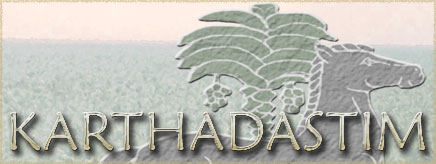


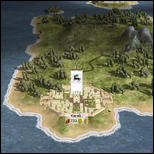
















 Reply With Quote
Reply With Quote










































 from Brave Brave Sir Robin
from Brave Brave Sir Robin from Tellos Athenaios as a welcome to Campus Martius
from Tellos Athenaios as a welcome to Campus Martius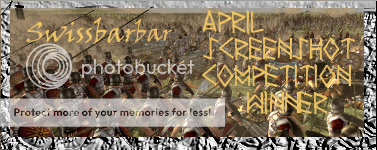















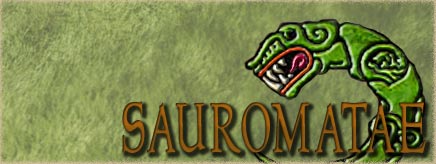
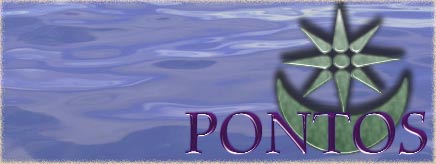
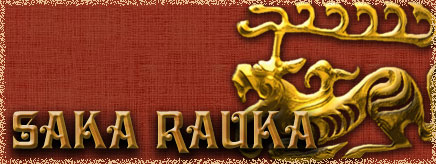

 (as usual)
(as usual)





 )
)

 )
)



Bookmarks